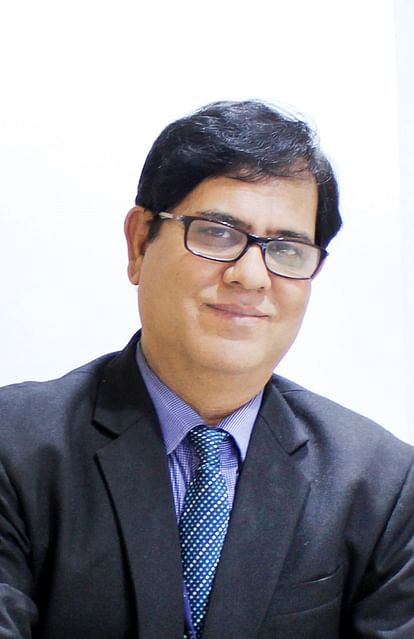
Healthcare In India
The budgetary announcement of this year for initiating massive health insurance scheme through health insurance protection scheme is a much awaited and welcome decision. India can march towards economic advancement only when it addresses the much-needed healthcare needs of its vast population. The need for universal health coverage was felt by all signatory nations including India at Alma -Ata Declaration way back in 1978. The Alma Ata Declaration laid emphasis for promoting primary health care. The whole emphasis was to address the main healthproblems through community participation, thereby, promoting equitable access to promotive, preventive, curative, palliative and rehabilitative healthservices. It was felt then that promoting and protecting health is crucial to human welfare and sustained economic and social development. It was also felt that health for all would make the world a better place to live in terms of quality of life, global peace and security. A good health system can survive and sustain itself if it is built around the values of Primary healthcare. Every country aspiresthat its health systems to become equitable, inclusive and fair.In 2005, again the pledge was renewed by all WHO member States that they would strive for universal health so that their people could access health services without paying for them.India’s march towards universal health is not, therefore, sudden as many people tend to believe. A High Level Expert Group Report on Universal Health Coverage for India Instituted by Planning Commission in a report submitted in 2011 defined universal health in elaborative terms. The report maintained all Indian citizens should have equitable access to affordable, accountable, appropriate health services and that also of assured quality .The assured quality should include promotive, preventive, curative and rehabilitative care. The report suggested that public health services should address wider determinants of health as well. The report emphasised that the government should play leading role by being guarantor and enabler of universal health coverage .The goal of National Health policy 2017 aspires for highest possible level of health and well-being across all age group, through a preventive and promotive health care orientation. The policy advocates going for universal health in a graduated and progressive manner, realising very much the difficulty of implementing universal health cover.
The healthcare scheme proposed by government of India, however, seeks to address the secondary and tertiary care. One gets the feeling that preventive and primary care has not been given its due. The world Health Report 2008 on Primary Health Care recognises the fact that social justice and health equity can be guaranteed when we move towards universal health coverage. The healthcare has to be woven around Primary care that seeks to address the healthcare needs and expectation of the community it serves. The proper healthcare need assessment would not only make the delivery system both relevant and responsive. In that scenario, the healthcare infrastructure and the delivery mechanism both need to be designed as per the needs of the community and not as per the needs of the service providers.
A good healthcare system should be wedded with the values of equity. It is true that we don’t live in an egalitarian society but the time has come to address the existing health inequities in India. The inequities are far too many. In the reference year 2015-16, in theOverall (Health) Performance Index Score, Kerala notched up the top position with 76.55 points while Uttar Pradesh languished at 33.69.Similarly the divide between rich and poor and the healthcare access across the various social strata continues to be disturbing. Health equity is possible when universal access is made possible through social health protection .The government has to come forward as a payor by taking proactive measures. Most people cannot buy healthcare or access healthcare because the healthcare cost is most often beyond their reach. The social health protection can come through either through community driven pooling or pre-payment instead of out-of-pocket payment at the point of receiving the care.
The healthcare delivery needs to be reformed to deal with the massive reach out as envisaged in the budget. The overt hospital centrism as prevalent today needs to be looked at seriously .Over specialisation and over reliance on technology has led to inefficiency and also inequality. Ideally, People should be at the centre or focus of a vibrant healthcare system –instead we have moved away from them. The over reliance on curative care, thus marginalising the role of primary care in the process has been the bane of current healthcare system.Health system- in India in the absence of good primary care has drifted towards unregulated commercialization.
Every government aspiring for universal health cover for its population needs to answer one very important question- How would it finance its health system in a sustained manner .The government needs to allocate higher priority to health by making higher budgetary allocation. Innovative financing is another way of looking at it. The tax on long term capital gains (LTCG) on equity investments can help government raise necessary resources. The World Health report -2010 suggested that India can raise a very large amount every year if it goes for a currency transaction levy of 0.005% on its foreign exchange transaction. In 2010, it was estimated that India could fetch close to US$ 370 million if it levies the above tax on its annual foreign exchange turnover.
The second pertinent issue that government needs to address relates to optimum use of available resources. The Health report 2017 rightly points out that we need to put faith in our Public Health Care System particularly in rural areas where most people cannot access healthcare for more than one reason. Either they don’t exist or even if they exist, they are mostly non-functional. If government is serious about implementing UHC – it needs to build the trust of the common man from the scratch in public health care system. India has huge network of health care centres like Sub Centres (SCs),Primary Health Centres (PHCs),Community Health Centres (CHCs),Sub-divisional Hospitals (SDHs) \Districts Hospitals (DH). There are still shortages of these facilities but unfortunately even the existing ones don’t deliver as per the expectation of the deprived population.If government wants to implement universal health though the route of insurance, it needs to strengthen the existing infrastructure. Insurance companies need to look for some reward mechanism to invigorate these institutions. Some state health schemes did try to work with these institutions but without much success. One cannot create health infrastructure overnight. The existing healthcare system in rural areas should be made financially viable if insurance companies start paying them for the services rendered by them. Certain portion the amount paid should be necessarily be spent on infrastructure development and equipping these units with required instruments. Doctors and other health workers should also be adequately rewarded for the services rendered. The need of the hour is therefore, strengthening the primary care and slowly build on secondary and tertiary care .There would be mushrooming of hospitals of all sizes and shapes If the focus gets diverted to secondary and tertiary care .In that case greed would drive the healthcare and the fruits of universal healthcare would remain elusive to a big poor population.
The boundary of care needs to very clearly defined If a healthcare system has to be efficient, and patient centric, affordable and effective. Very few countries in the world provide all cares. India should start its march for universal health cover by adopting preventive and promotive care .Some important life threatening diseases should be covered initially. The rehabilitative and palliative cares are good in the realm of ideology but very difficult to achieve mainly because they require different institutional settings.Roughly 8% of Indian population is geriatric population .Their healthcare needs are very different. Homecare and Sub-acute centres are the institutional settings that better serve their healthcare needs. They are less costly and extremely effective dealing with healthcare needs of the ageing population.They can also help generate huge employment of skilled healthprofessionals like physical occupational and speech therapists, home health aide,pharmacists,dieticians to mention a few.Accredited Social Health Activist (ASHA) is an excellent example of trained female community health activists who have contributed significantly in fulfilling therural healthcare needs.
The insurance route has been a mix bag. It suffers from inverse care .In inverse care people with the more resources and fewer healthcare needs tend to consume more care. On the other hand, people with more healthcare needs are deprived of healthcare facility.
Group Business (other than Govt. Business)covers only 16% people of the total 4375 lakh people covered by health insurance in 2016-17. These groups of people mostly corporate employees and reasonably well off financially consume the most health care The utilization rate expressed in terms of incurred claim which indicates the claim outgo is significantly high at 125% (for every premium of Rs.100, the claim outgo is Rs.125)for these groups of people.Health insurance companies have failed to garner individual business .Only 7% i.e. close to 320 lakh people are covered by individual health insurance policies .The incurred claim ratio of individual class of business is 76% much lower than government sponsored health insurance policies (122%).But individual policies don’t sale in the market for they are extremely costly and offer restrictive cover vis-a-vis group insurance policies. Unfortunately individual class has to subsidise the cost of the effluent section of the society.The total incurred claim ratio of health portfolio was 106% in 2016-17 and it had remained more than 100% in the last three years. This clearly shows that health insurers have failed to handle this portfolio efficiently. The utilization rate across certain specific diseases, hospitals and geography has been high .In that scenario,Government would find difficult to sustain this scheme over a long period of time.
The fear is that our healthcare system would driftmore and more towards Misdirected Care as resource generated would be spent for curative care. There would be steep rise in speciality and super speciality healthcare centres. The fear can be dispelled if the potential of primary and preventive care is realised. The primary healthcare to a considerable extentcan lessen the load of curative care .The government policies have often led to fragmented care. The excessive stress on disease specific control did not allow holistic growth. Realising this, the current budget has rightly increased the total health budget by 2.8% by reducing budget on specific disease control. This was much needed to arrest the fragmentation of healthcare.
Health insurers must know how to purchase healthcare services. Today, theycommand more than Rs.30,000crore business and would grow further. The healthcare providers in India are largely unregulated segment .Stringent acts on the pipeline may not help the cause. In that scenario, health insurers should use their collective bargain skills to raise their own standards to evaluate the services of health providers to keep them in check. The initiative of National Pharmaceutical Pricing Authority (NPPA) to cap the prices of coronary stents both metal and drug eluting is a revolutionary development .The implementation has suffered as bigger hospitals have stayed away from introducing these prices at flimsy grounds.
The RSBY scheme, despite its many failings was both revolutionary and revealing. It failed owing to dwindling political will. Some state governments went on to introduce their own schemes often for the same population. Maharashtra was one such example. The concept of smart health card along with screening and health camps was indeed a great move to sensitise the rural population. The foundations of world’s biggest healthcare should be laid on pragmatic note with the thrust on preventive and promotive care.
Pharmaceutical Pricing Authority (NPPA) capped the price of coronary. The prices of bare metal stents and drug-eluting stents have been cappedINR and 29,600 INR respectively excluding local taxes.
By Prof.(Dr) Abhijit K.Chattoraj, Chairperson, Centre For Insurance & Risk Management –Birla Institute of Management Technology(BIMTECH) Greater Noida









